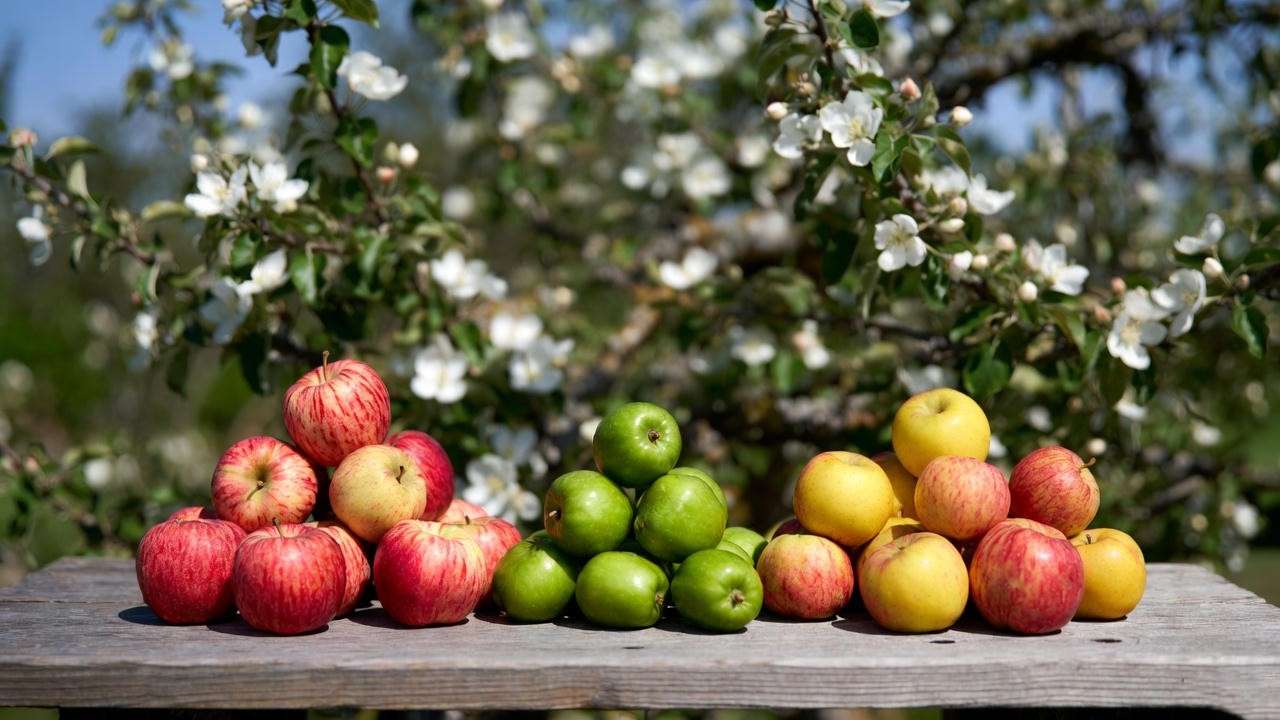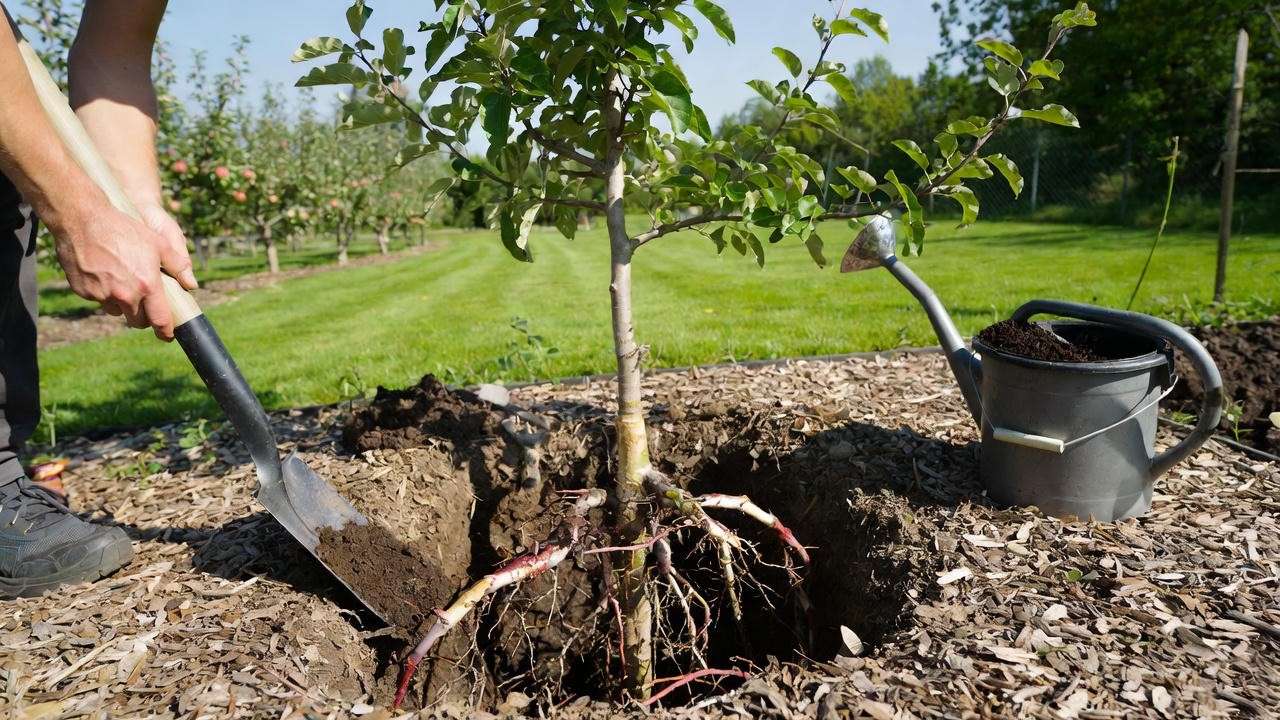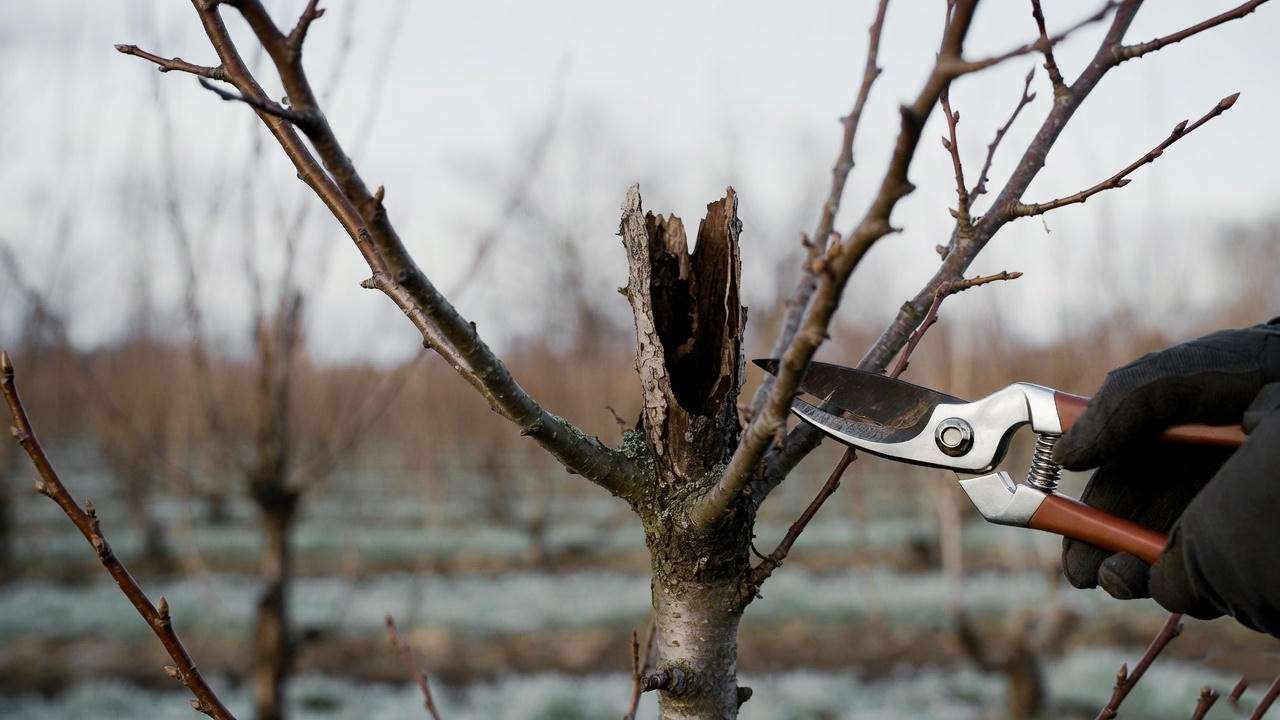Picture this: you step into your backyard, pluck a crisp, juicy apple from a sturdy grafted apple tree, and savor the fruits of your labor. That’s the magic of growing grafted apple trees—a proven way to transform your garden into a productive orchard! Whether you’re a home gardener or a budding orchardist, grafted apple trees offer unmatched benefits: faster fruiting, tailored growth, and resilient health. In this comprehensive guide, I’ll share expert strategies to help you select, plant, and care for grafted apple trees, ensuring bigger yields and healthier fruit. With over 15 years of horticultural experience and insights from top agricultural research, this article is your roadmap to orchard success. 🌟
Understanding Grafted Apple Trees: The Science Behind the Success 🌱
What Are Grafted Apple Trees?
Grafted apple trees are created by joining a scion (the fruit-producing upper part) with a rootstock (the root system). This horticultural technique combines the best traits of both parts: the scion delivers your desired apple variety, while the rootstock controls tree size, hardiness, and disease resistance. For example, grafting a Honeycrisp scion onto a dwarf M9 rootstock produces a compact tree ideal for small gardens, yielding delicious apples in just 2–3 years. Grafting ensures consistency—unlike seed-grown trees, which can vary wildly in fruit quality.

Why Choose Grafted Apple Trees Over Seed-Grown Trees?
Grafted apple trees outshine seed-grown trees in every way. Seedlings take 7–10 years to bear fruit and often produce inconsistent apples. In contrast, grafted trees fruit in 2–5 years, delivering predictable flavors and textures. They’re also tailored to your needs: dwarf rootstocks suit small spaces, while standard ones thrive in large orchards. Research from Cornell University shows grafted trees can increase yield efficiency by up to 40%. Plus, rootstocks enhance resistance to pests, diseases, and harsh climates, making them a smart choice for reliable harvests.
Common Types of Rootstocks and Their Benefits
Rootstocks determine a tree’s size, vigor, and adaptability. Here’s a quick guide:
- Dwarf (e.g., M9, M26): Grows 6–10 feet tall, perfect for patios or high-density planting. Fruits early but needs staking.
- Semi-dwarf (e.g., M7, MM111): Reaches 12–18 feet, balancing size and yield for home orchards. Adapts to various soils.
- Standard (e.g., Antonovka): Towers 20+ feet, ideal for long-lived, large-scale orchards. Cold-hardy and robust.
Expert Tip: Match your rootstock to your climate and soil. For example, MM111 thrives in heavy clay, while M9 prefers well-drained loam.
Choosing the Right Grafted Apple Tree for Your Garden 🏡
Selecting the Best Apple Varieties
Your apple variety sets the stage for flavor, texture, and use. Popular choices include:
- Honeycrisp: Sweet, crisp, great for fresh eating, but needs good pollination.
- Gala: Mildly sweet, early-season, ideal for snacking or baking.
- Granny Smith: Tart, green, perfect for pies and long storage.
- Fuji: Sweet, firm, excellent for fresh eating and juicing.
Consider pollination needs—most varieties require a compatible partner (e.g., Gala and Fuji). Heirloom varieties like Cox’s Orange Pippin add unique flavors but may need extra care. Check harvest times to stagger your crop for fresh apples all season.

Matching Rootstocks to Your Environment
Your local conditions—soil, climate, and space—dictate the best rootstock. Test your soil’s pH (aim for 6.0–6.5) and drainage. Clay soils benefit from vigorous rootstocks like MM111, while sandy soils suit M9. In cold climates, choose cold-hardy options like Budagovsky (B9). For small yards, dwarf rootstocks maximize space without sacrificing yield. Expert Tip: Contact your local extension service for region-specific advice tailored to your USDA hardiness zone.
Where to Buy Quality Grafted Apple Trees
Source your trees from reputable nurseries like Stark Bro’s, Raintree Nursery, or local growers. Avoid big-box stores, which may sell mislabeled or low-quality stock. Look for certifications ensuring disease-free trees and true-to-type varieties. Resource: Check the American Nursery & Landscape Association for verified suppliers. Investing in quality trees prevents headaches like poor growth or graft failure.
Planting Grafted Apple Trees: A Step-by-Step Guide 🌞
When and Where to Plant
Plant grafted apple trees in early spring (after the last frost) or late fall (before the ground freezes) for best root establishment. Choose a site with full sun (6+ hours daily), good air circulation, and well-drained soil. Avoid low-lying frost pockets or waterlogged areas, which stress trees and invite disease. A south-facing slope is ideal for warmth and light.
Preparing the Planting Site
Start with a soil test to check pH and nutrient levels. Amend acidic soils with lime or add compost for fertility. Dig a hole twice as wide and as deep as the rootball—about 2 feet wide and 18 inches deep. Mix native soil with compost (50:50 ratio) to improve texture. Tip: Sprinkle mycorrhizal fungi in the hole to boost root growth and nutrient uptake.
Planting Techniques for Success
Position the tree so the graft union (the visible “knot” where scion meets rootstock) sits 2–4 inches above the soil line. This prevents the scion from rooting, which defeats the rootstock’s purpose. Spread roots evenly, backfill with soil, and tamp gently to remove air pockets. Water deeply (1–2 gallons) and apply a 2–4-inch layer of wood chip mulch, keeping it 6 inches from the trunk to prevent rot. Stake dwarf or semi-dwarf trees to protect against wind. Visual Aid: See the diagram below for proper planting depth.
[Insert placeholder for planting diagram: Show tree with graft union above soil, roots spread, and mulch layer.]

Caring for Grafted Apple Trees: Year-Round Maintenance 🛠️
Watering and Fertilizing
Young grafted apple trees need consistent moisture—1–2 inches of water weekly, adjusted for rainfall. Use a soaker hose or drip irrigation to target roots. In year one, fertilize sparingly with a balanced 10-10-10 NPK in spring. Mature trees benefit from 1–2 pounds of fertilizer per year, split into two applications (early spring and late spring). Expert Insight: Over-fertilizing causes excessive leaf growth at the expense of fruit. Test soil annually to avoid nutrient imbalances.
Pruning for Health and Productivity
Prune in late winter when trees are dormant to shape structure and boost yields. For dwarf trees, use the open-center system to maximize light penetration. Standard trees benefit from a central-leader shape for stability. Remove dead, damaged, or crossing branches, and thin crowded areas to improve air flow. Tip: Sterilize pruning tools with alcohol to prevent disease spread. Watch a pruning tutorial from your local extension service for hands-on guidance.

Pest and Disease Management
Grafted apple trees face pests like codling moths, apple maggots, and aphids. Diseases include fire blight (bacterial), apple scab (fungal), and powdery mildew. Use integrated pest management (IPM): traps for moths, neem oil for aphids, and sulfur sprays for scab. Plant disease-resistant varieties like Liberty to reduce chemical use. Preventive Tip: Clean up fallen leaves and fruit to disrupt pest life cycles. Monitor trees weekly for early signs of trouble.
Maximizing Yields: Pollination and Fruit Thinning 🍏
Understanding Pollination Requirements
Most apple varieties need a cross-pollinator within 50 feet to set fruit. Pair compatible varieties (e.g., Honeycrisp with Gala) or choose self-pollinating options like Golden Delicious. Boost pollination by planting bee-friendly flowers like clover or lavender nearby. If space is tight, consider multi-graft trees with several varieties on one rootstock. Tip: Rent a beehive during bloom season to ensure robust pollination.
Thinning for Bigger, Healthier Apples
When apples reach marble size (about 1 inch), thin to one fruit per cluster, spaced 6–8 inches apart. This prevents branch breakage, improves fruit size, and reduces biennial bearing (alternating heavy and light crops). Use clean scissors or twist fruits off gently. Example: Thinning a Gala tree increased average fruit weight by 30% in a 2023 study from Washington State University.
Harvesting and Storing Your Apples 🍎
When to Harvest
Timing your apple harvest is critical for peak flavor and storage potential. Grafted apple trees typically bear fruit between late summer and early fall, depending on the variety. Look for these signs of ripeness: a full color change (e.g., green to red for Gala), firm texture, and apples that detach easily with a gentle twist. Taste-test a few fruits to confirm sweetness and avoid over-ripening, which leads to mealy textures. Early-season varieties like Gala ripen in August, while late-season Granny Smith may last until October. Tip: Check your variety’s expected harvest window with a local extension service for precision.

Proper Storage Techniques
To enjoy your apples for months, store them properly. Keep apples in a cool (32–40°F), humid environment, such as a root cellar or refrigerator crisper. Wrap each apple in newspaper or place them in perforated plastic bags to limit ethylene gas spread, which accelerates ripening. Sort apples by size and variety—larger apples and late-season types like Fuji store longer (up to 6 months). Expert Insight: Heirloom varieties like Cox’s Orange Pippin often outlast modern cultivars due to their dense flesh. Inspect monthly for spoilage and remove affected fruits promptly.
Troubleshooting Common Problems with Grafted Apple Trees ⚠️
Why Isn’t My Tree Fruiting?
If your grafted apple tree isn’t producing, several factors could be at play. Young trees (under 3–5 years) often need time to mature. Poor pollination is another culprit—ensure a compatible pollinator is nearby and bees are active. Nutrient imbalances, like excessive nitrogen, promote leafy growth over fruit. Solutions: Wait patiently for young trees, plant a pollinator variety, or test soil to adjust fertilization. If pruning is too aggressive, ease up to preserve fruiting spurs. A soil test from your local extension can pinpoint deficiencies.
Dealing with Graft Union Issues
The graft union is the lifeline of your tree, but issues can arise. Signs of failure include weak scion growth, excessive suckering from the rootstock, or splitting at the union. These often stem from improper planting (e.g., graft buried below soil) or physical damage. Fixes: Replant with the graft 2–4 inches above ground, stake to reduce wind stress, or replace the tree if damage is severe. Expert Warning: Suckers from the rootstock produce inferior fruit—prune them immediately to maintain scion dominance.
Addressing Environmental Stress
Drought, frost, or poor soil can stress grafted apple trees, causing leaf drop, stunted growth, or fruit loss. Drought requires deep, infrequent watering (1–2 inches weekly). Late frosts during bloom can kill flowers—use frost blankets or site trees on slopes to avoid cold pockets. Poor soil benefits from organic amendments like compost. Resource: Use the USDA’s Plant Hardiness Zone Map to tailor care to your climate. Regular monitoring catches stress early, preserving tree health.
Advanced Tips for Grafted Apple Tree Success 🚀
Espalier and High-Density Planting
For small spaces or aesthetic appeal, try espalier—training trees flat against a wall or trellis in patterns like candelabra or fan. This maximizes light exposure and simplifies harvesting. High-density planting, using dwarf rootstocks spaced 4–6 feet apart, mimics commercial orchards for home growers, boosting yields per square foot. Example: A 10×10-foot plot can support 4–6 dwarf trees, producing 100+ pounds of apples annually. Use sturdy trellises and prune annually to maintain shape.
Grafting Your Own Apple Trees
Feeling adventurous? Grafting your own apple trees lets you customize varieties or preserve heirlooms. Common techniques include whip-and-tongue (for similar-sized scion and rootstock) or cleft grafting (for larger rootstocks). You’ll need a sharp grafting knife, grafting tape, and sealing wax. Collect scion wood in late winter from healthy, disease-free trees. Expert Warning: Practice on low-value stock first—grafting takes skill, and mistakes can waste time and materials. Online tutorials from university extensions can guide beginners.
Sustainable Practices for Long-Term Health
Sustainable care ensures your grafted apple trees thrive for decades. Plant cover crops like clover to enrich soil and attract pollinators. Use compost or aged manure instead of synthetic fertilizers to build organic matter. Implement integrated pest management (IPM), combining traps, beneficial insects, and minimal sprays. Benefits: Healthier soil, fewer chemicals, and resilient trees. A 2024 study from Oregon State University found IPM reduced pesticide use by 50% while maintaining yields, proving sustainability works.
FAQs About Grafted Apple Trees ❓
Q1: How long does it take for a grafted apple tree to bear fruit?
Most grafted apple trees fruit in 2–5 years, depending on the rootstock and variety. Dwarf trees (e.g., M9) are fastest, often producing in 2–3 years, while standard trees may take 4–5 years. Ensure proper pollination and care to speed up fruiting.
Q2: Can I grow grafted apple trees in containers?
Yes, dwarf grafted apple trees like those on M27 or M9 rootstocks thrive in large containers (15–20 gallons). Use well-drained potting mix, water regularly, and fertilize sparingly. Move pots to shelter in harsh winters to protect roots.
Q3: What’s the best rootstock for clay soil?
MM111 or M7 rootstocks perform well in clay soils due to their vigor and adaptability. Improve drainage with raised beds or compost to prevent waterlogging, which stresses roots.
Q4: How do I know if my tree’s graft is failing?
Signs include weak scion growth, excessive rootstock suckers, or splitting at the graft union. Check planting depth (graft should be above soil) and prune suckers. If issues persist, consult a nursery for replacement options.
Q5: Are grafted apple trees harder to care for than other fruit trees?
Grafted apple trees aren’t inherently harder but require specific care, like proper graft placement and pollination. Their tailored rootstocks simplify management by matching your climate and space, making them easier than seedlings in many cases.
Conclusion: Your Path to a Thriving Apple Orchard 🌄
Grafted apple trees are a game-changer for home growers, offering faster fruit, tailored growth, and reliable harvests. By choosing the right variety and rootstock, planting correctly, and following expert care tips, you’ll enjoy bountiful yields of crisp, flavorful apples. Start small, monitor your trees, and lean on resources like local nurseries or extension services for support. Bookmark this guide for year-round reference, share your orchard journey in the comments, or contact a trusted supplier to begin today! Your dream orchard is just a graft away. 🌳













